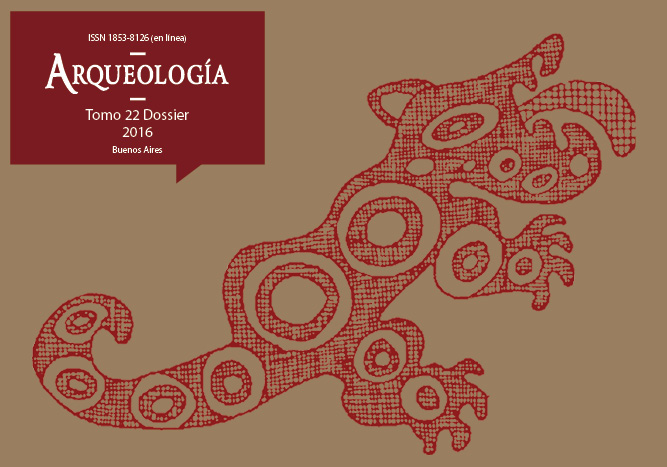Variaciones ecomorfológicas de las poblaciones de guanaco de Patagonia (Argentina)
Palabras clave:
Lama guanicoe, Patagonia, Tamaño corporal, Variación latitudinal, Variables ambientales, Osteometría
Resumen
Este trabajo estudia los tamaños corporales de las poblaciones modernas de Lama guanicoe de Patagonia continental e insular (Argentina), a partir del análisis osteométrico de cuatro huesos largos delanteros (húmero, radiocúbito, metacarpo y primera falange). Se analizó una muestra de más de 100 individuos procedentes de las provincias de Río Negro (40°S), Santa Cruz (48-52°S) y Tierra del Fuego (53-54.5°S). Las variaciones morfológicas de los tamaños se evaluaron en función de las variables ecoambientales de: temperatura (máxima/mínima), precipitación (estival, invernal y anual), productividad primaria neta aérea (PPNA) e índice de vegetación diferencial normalizado (NDVI). Los datos fueron procesados mediante diferentes análisis uni y multivariados. Los resultados demostraron que, en una escala macroregional, se registra un gradiente clinal de los tamaños corporales de las poblaciones de guanacos (los individuos de Tierra del Fuego son significativamente más grandes que los de Santa Cruz y éstos más grandes que los de Río Negro). Todos los factores ecoambientales que se asocian fuertemente con los tamaños óseos (temperatura máxima, PPNA, NDVI) covarían en la región de estudio con la latitud. El patrón clinal observado es, en principio, consistente con las expectativas derivadas de la Regla de Bergmann. Igualmente las diferentes variables ambientales y biogeográficas que influyen sobre los patrones de los tamaños de los guanacos modernos de Patagonia, exponen que la relación entre el tamaño corporal y el ambiente es de naturaleza compleja y no se puede explicar de forma simple y directa por un solo factor.Descargas
La descarga de datos todavía no está disponible.
Cómo citar
L’Heureux, G. L., & Cornaglia Fernández, J. (1). Variaciones ecomorfológicas de las poblaciones de guanaco de Patagonia (Argentina). Arqueología, 22(3), 125-144. https://doi.org/10.34096/arqueologia.t22.n0.3280
Sección
Artículos
Los autores/as que publiquen en esta revista aceptan las siguientes condiciones:
- Los autores/as conservan los derechos de autor y ceden a la revista el derecho de la primera publicación, con el trabajo registrado mediante Licencia Creative Commons 4.0 Internacional (CC-BY-NC-SA), que permite a terceros utilizar lo publicado siempre que mencionen la autoría del trabajo y a la primera publicación en esta revista.
- Los autores/as pueden realizar otros acuerdos contractuales independientes y adicionales para la distribución no exclusiva de la versión del artículo publicado en esta revista (p.e. incluirlo en un repositorio institucional o publicarlo en un libro) siempre que indiquen claramente que el trabajo se publicó por primera vez en esta revista.
- Se permite y recomienda a los autores/as a publicar su trabajo en Internet (p.e. en sus sitios web personales o en depósitos institucionales), tanto antes como después de su publicación en esta revista, siempre y cuando proporcionen información bibliográfica que acredite, si procede, su publicación en ella. De esta manera, pueden favorecerse intercambios productivos y a una mayor y más rápida difusión del trabajo publicado (vea The Effect of Open Access).



.png)

(1)13.png)






1.jpg)
1.png)
1.jpg)


13.png)
1.png)


(1)1.png)









